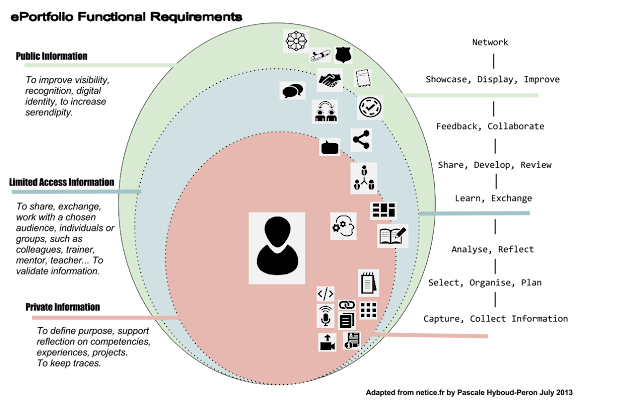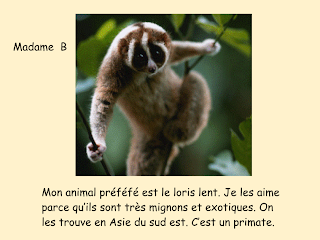There has been some good, some great and some less good and some messy!
I have:
- deepened my understanding of the scope and role of ePortfolios, researched and analysed methods of implementation outside of schools, inquired into their potential for employability, professional certifications and acreditations, as well as personal branding.
- dived in to identify and articulate the attributes of the Life Long Learner
- related the building of an ePortfolio to digital identity, digital footprints and key digital literacies.
- made sense of the inherent links between personal learning and social learning and how to scaffold them
- assessed ways of restructuring the way we work to make best use of both personal and social learning
- evaluated a range of online tools and services to support the ePortfolio approach
- started using design thinking
- worked on OpenBadges, instructional design
- realized I am only a technology consumer ...
- had a first go at synthesing this into a minimum value proposition to get started with ThinkAgency
- contributed by invitation to many projects and conversations but failed (so far) to get all the stakeholders I have engaged with to contract me…
This has led me to:
- identify salient common points between the "world of education" and the "world of work"
- slowly break away from my "edu" echo chamber and go and listen/participate in other communities
- discover an engaging and switched on to learning professional community
- see the need for a common vocabulary when labeling and describing skills, strengths, competence
- invest in attending conferences where I have listened, participated, presented, met with
- see and work through others' problem with them
- value openness as the modus operandi
- talk a lot around dreams and ideas (sigh…)
- throw myself in a lot of new related stuff wanting to start to understand OpenBadges potential, IT stuff around metadata, experiencing basic coding...
- feel frustrated by not staying focus

Which in turns has opened my eyes to: (the confronting....)
- how limited I actually am to see the big picture: I find it hard placing boundaries around my ideas to have them evolve beyond just that
- the tyranny of too much autonomy! (especially let lose with a connected device)
- how limited my mastery around IT is beyond using/consuming
- how easily I forget I can't assume and must verify all hypothesis...
- how unable I seem to be at actually establishing my own actionable purpose!

Yet fabulous stuff happened such as:
- experiencing the world of entrepreneurship and start ups
- getting a feel for this whole ecosystem and going in with eyes wide open
- drawing some connections to the world as I have known it so far
- acquiring vast amount of new learning (some of it yet to be connected)
- witnessing what truly persuasive and convincing look like in practice
- starting to understand value in a commercial and business sense
- developing solid partnerships
I have maintained and grown lasting existing friendships.
I have worked on balancing my PLN, opened new channels and participated in a range of conversations.
I might have done it with too much gusto….
My teenage-like heart has fallen in love at first sight with many enlightening, supportive, challenging, critical new friends.
I count on time and actions to tell how these influences evolve!
I live with and love the most honest and caring dragon. I must never lose sight of this.
2013 as the "Year of Trying"!
In the unstoppable momentum I have been saying yes yes and yes to so many things: I have done, got feedback, got knocked, undone, redone.
Today it feels that in terms of accomplishments for the year, well, it is close to a "not a lot to show for".
To move forward into 2014 I will need to do less Yes to learning and more Yes to executing.
I have a few weeks before making New Year's Resolution. Phew.
Why am I doing this?
The ability to learn is the only lasting competitive advantage for any organization. H. Jarche
Can I build a business model around this?
I have the ideas, the people, the want and the drive.
2014 will be the Year of the Concrete Steps.


















